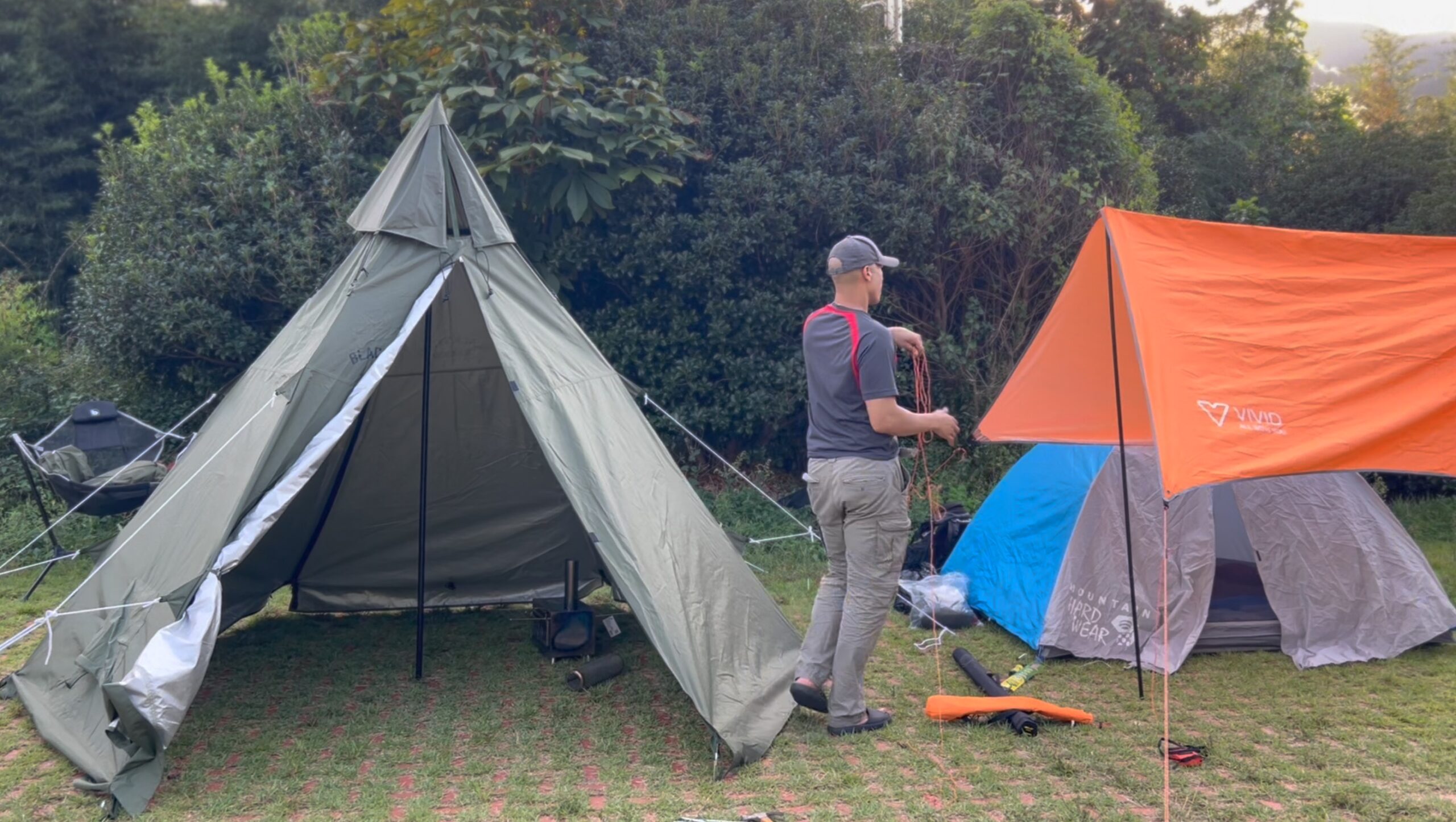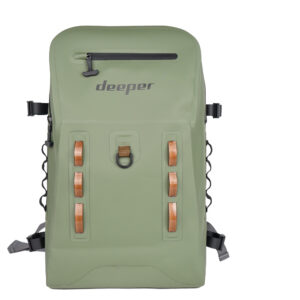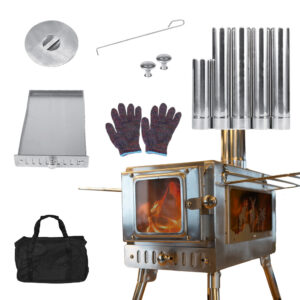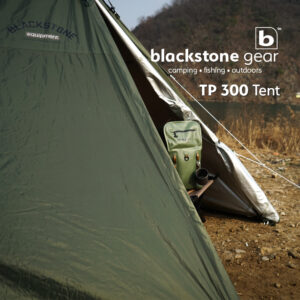Let’s compare polyester, nylon, oxford, and canvas materials specifically for camping tents. Each of these materials has distinct characteristics that can influence their performance in camping scenarios. Here’s a comparison of their pros and cons:
1. Polyester Camping Tents:
polyester is commonly used for family tents or least expensive tents. Polyester is a versatile and cost-effective material that offers several advantages for tent manufacturers, especially when catering to budget-conscious consumers or those looking for family camping options.
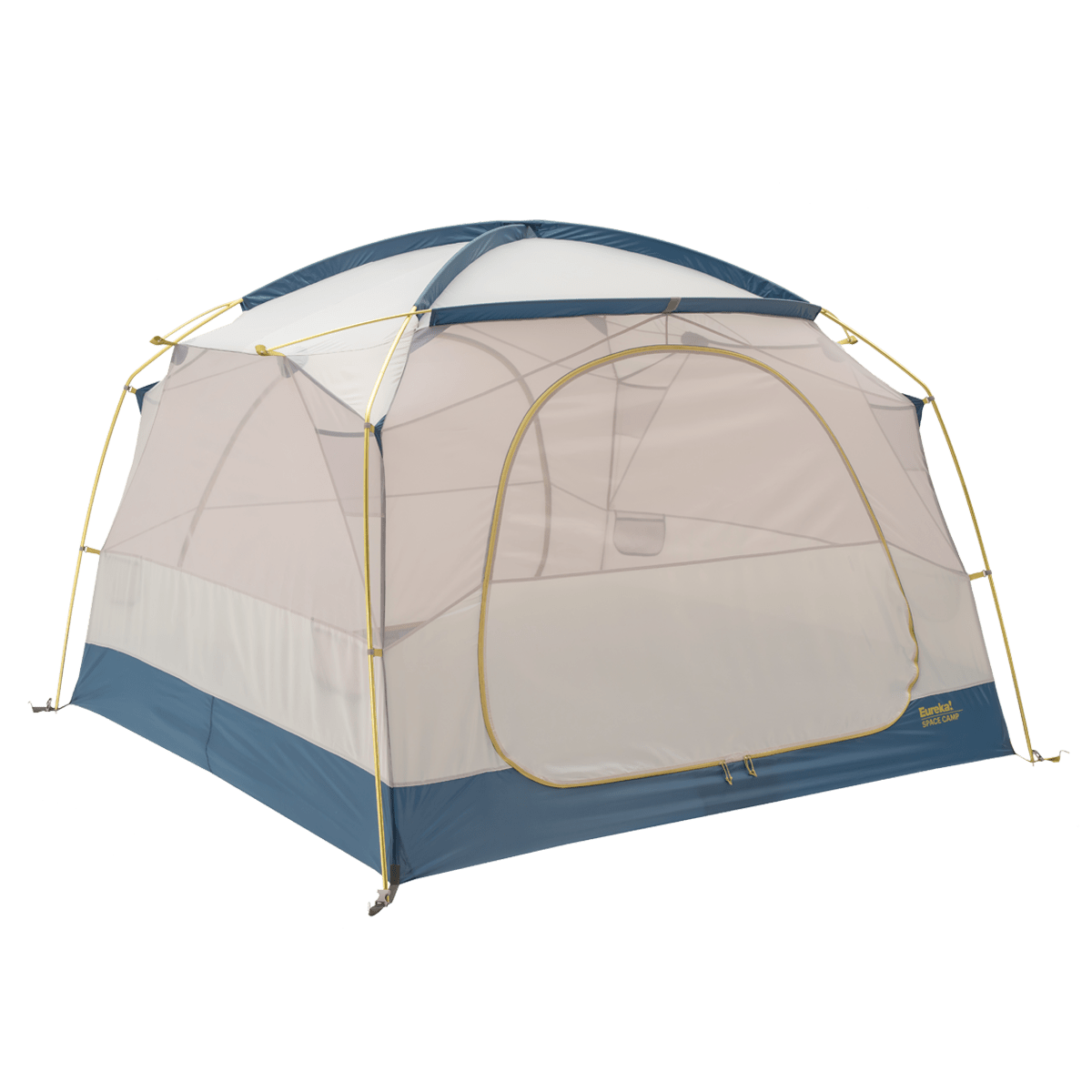
Pros:
– Durable and resistant to abrasion, making it suitable for rugged camping conditions.
– Quick-drying, ensuring your tent stays dry even after exposure to rain or dew.
– Lightweight, which is advantageous for backpacking and hiking trips.
– Good color retention, maintaining its appearance over extended outdoor use.
Cons:
– Less breathable than natural fibers, potentially leading to condensation buildup inside the tent.
– Prone to UV damage, so it may require additional UV-resistant coatings for extended use.
– Lower-quality polyester may be less durable and susceptible to tearing.
2. Nylon Camping Tents:
The material most often used for backpacking tents is nylon. Nylon is a popular choice among backpackers and outdoor enthusiasts because of its excellent strength-to-weight ratio, durability, and water-resistant properties. These characteristics make nylon tents lightweight, easy to carry, and suitable for various weather conditions.
Pros:
– High strength-to-weight ratio, making it excellent for lightweight and portable tents.
– Resistant to stretching and abrasion, providing good durability.
– Quick-drying, ideal for wet weather conditions or camping near water bodies.
– Compact and easy to pack, perfect for backpacking trips.
Cons:
– Can deteriorate with prolonged exposure to sunlight (UV rays), requiring UV treatments for longevity.
– Not as breathable as natural fibers, potentially leading to condensation inside the tent.
– Lower-denier nylon tents may be less durable and prone to tears.
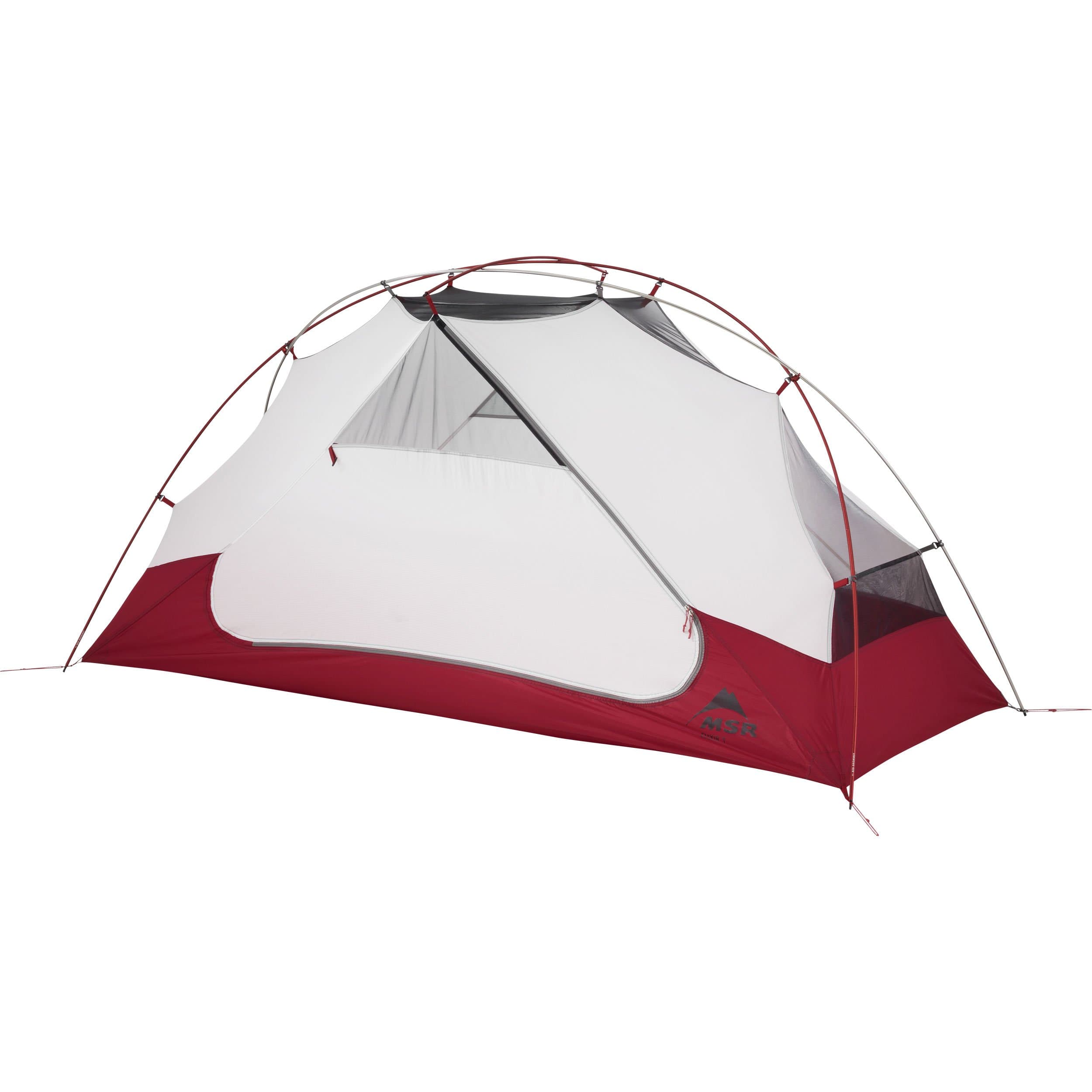
4. Canvas Camping Tents:
Canvas is generally the most expensive tent material among polyester, nylon, and canvas. While it offers excellent durability and natural breathability, canvas is a premium material that often comes at a higher cost compared to synthetic options like polyester and nylon.
Pros:
– Extremely durable and long-lasting, making them ideal for extended camping trips.
– Natural breathability, allowing for better ventilation and reduced condensation.
– Resistant to UV damage, maintaining its strength and integrity over time.
Cons:
– Heavier compared to synthetic options, making them less suitable for backpacking or long hikes.
– Canvas tents can be bulkier and more challenging to pack down compared to modern synthetic tents.
– Requires more care and maintenance, as they may need to be weatherproofed periodically.
When choosing a camping tent, consider factors such as the expected weather conditions, the frequency of use, the size and weight you can comfortably carry, and your budget. All of these materials have their advantages and disadvantages, so the best choice will depend on your specific camping needs and preferences.

